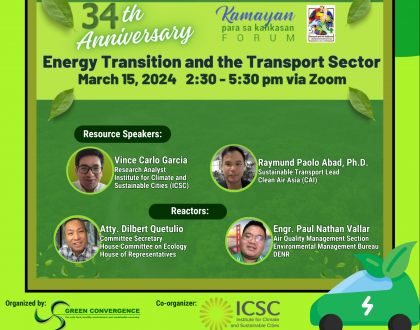Federalism a major threat to the environment

By KIMBERLIE NGABIT-QUITASOL via Northern Dispatch Weekly
BAGUIO CITY — The Duterte administration’s push for a federal form of government is seen as among the major threats to the environment by green groups who spoke about mines, giant dams and forests at the State of Nature Assessment 2018 on August 20.
“For us charter change and federalism poses the biggest threat to environmental justice,” said Jaybee Garganera of Alyansa Tigil Mina (ATM).
Garganera spoke about how large corporate mines destroyed forests, mountains and rivers; and displaced indigenous communities, and that the present congress cannot be trusted to change the Constitution.
Garganera said this congress rejected the appointment of Gina Lopez as secretary of the Department of Environment and Natural Resources (DENR). He pointed out that many lawmakers have interests in mine corporations or were supported by mining firms during their campaign, including members of the Commission on Appointments.
“Our environmental problem is not a technical problem, not a financial problem even, it is a problem of political will,” Garganera said.
He said that the 10 months of Lopez as DENR secretary proved that environmental law can be strictly implemented if there is political will.
“These people who rejected the appointment of a DENR secretary who had the balls to implement environmental laws, this congress will change the constitution towards federalism,” he said.
Garganera further pointed out that in the draft federal constitution, environmental protection was delegated to the federated regions, which he said is problematic given the existense of political dynasties. “What do we expect when we let political dynasties decide on logging, mining and other extractives?” he said. He added that with the political record of these dynasties, the environment is in big danger.
Garganera also said that in the proposed federal constitution, a phrase ‘as provided by law’ was added to the 60-40 equity rule on foreign ownership provided under the present constitution. He said that with this phrase, congress can later enact a law that would reverse this protectionist provision.
Garganera said that under a federal government, the federated regions will scramble for resources for their states. He said the regions will now invite investors that would include mines, dams, plantations and other extractive industries.
“We join the concern on the new form of political governance being pushed today,” said Atty. Jose Andres Canivel executive director of the Forest Foundation Philippines.
Canivel talked about the state of the country’s forests and he identified the push for federalism as among the major threats to the remaining forests. He said that in the proposed federal constituion, forest management, protected areas and indigenous people concerns are also delegated to the federal regions. “For us it is a difficult situation,” he said.
Canivel cited as example Mount Apo, a protected area because it is a source of energy, home for IPs and habitat of the Philippine eagle. He said Mt. Apo spans three regions. “How will they manage it?” he said. “We asked this question to the members of the constitutional commission and to DILG as well and they told us to offer a suggestion instead,” he added.
Canivel said the proponents of federalism should have thought of this before pushing for a change in the form of government.
Canivel said that their successful forest restoration and protection projects are in IP ancestral lands. “In our experience IPs are doing a better job at forest management,” he said.
Based on the mapping of the Philippine Association for Inter-Cultural Development (PAFID), the remaining forests in the country are within IP ancestral domains, which are also the same areas where mining operations and applications are. PAFID has mapped out the agricultural areas, protected areas, mining operations and applications, remaining forests, IP ancestral domains and important bird areas in the country. Interestingly, the maps showed that mining operations and applications overlap with protected areas, IP ancestral domains and remaining forest areas. # nordis.net
Recommended Posts

Energy Transition and the Transport Sector
March 15, 2024

As Farmers See It: Challenges in Agriculture
February 16, 2024

